Our Journal Covers
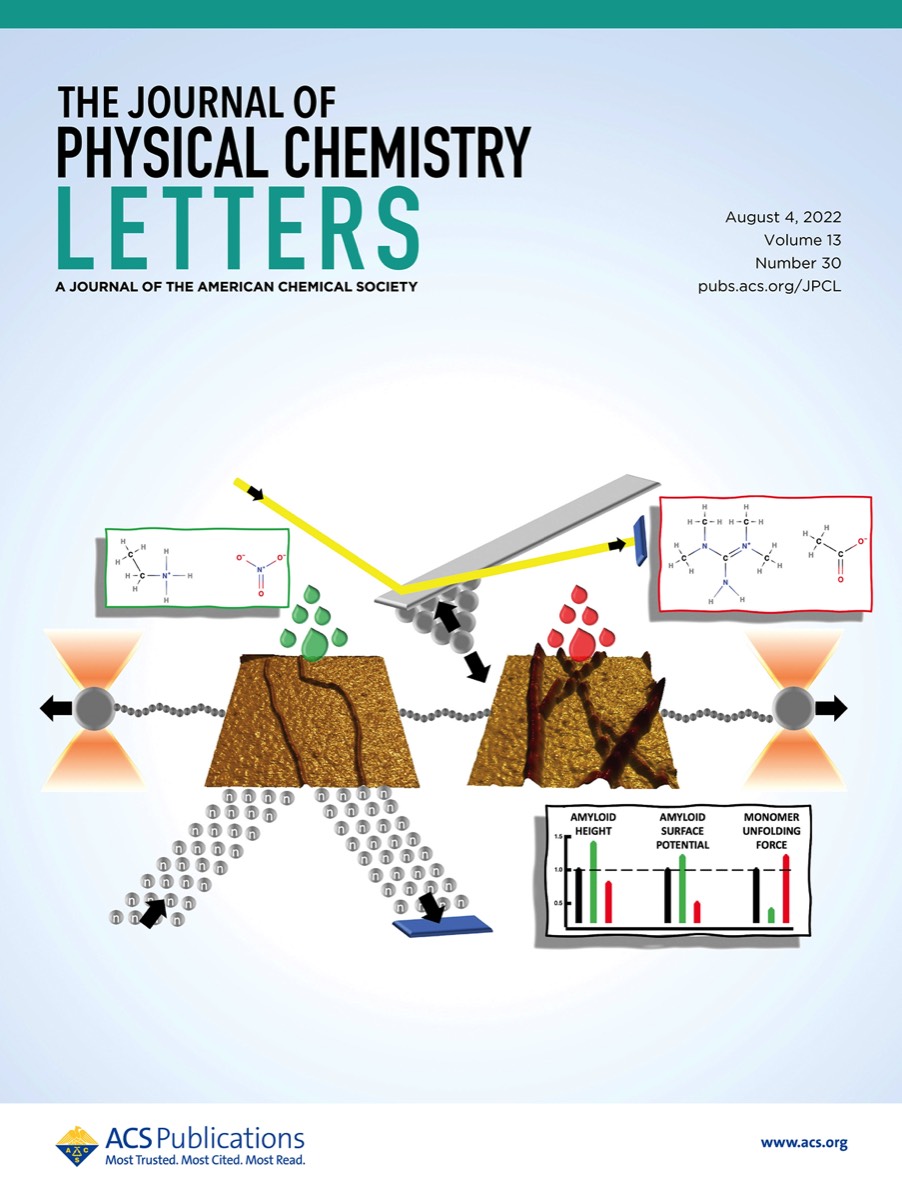
Cartoon sketching a joint atomic force microscopy, optical tweezers, and neutron scattering study showing that ionic liquids can finely control amyloid properties unraveling a vast playground for novel applications in pharmacology, material science and nanotechnology.
V. Pillai, P. Kumari, S. Kolagatla, V.G. Sakai, S. Rudić, B. Rodriguez, M. Rubini, K. Tych, A. Benedetto, Controlling Amyloid Fibril Properties Via Ionic Liquids: The Representative Case of Ethylammonium Nitrate and Tetramethylguanidinium Acetate on the Amyloidogenesis of Lysozyme, Journal of Physical Chemistry Letters, 13, 7058 (2022)
>>>> LINK TO THE PAPER <<<<
V. Pillai, P. Kumari, S. Kolagatla, V.G. Sakai, S. Rudić, B. Rodriguez, M. Rubini, K. Tych, A. Benedetto, Controlling Amyloid Fibril Properties Via Ionic Liquids: The Representative Case of Ethylammonium Nitrate and Tetramethylguanidinium Acetate on the Amyloidogenesis of Lysozyme, Journal of Physical Chemistry Letters, 13, 7058 (2022)
>>>> LINK TO THE PAPER <<<<
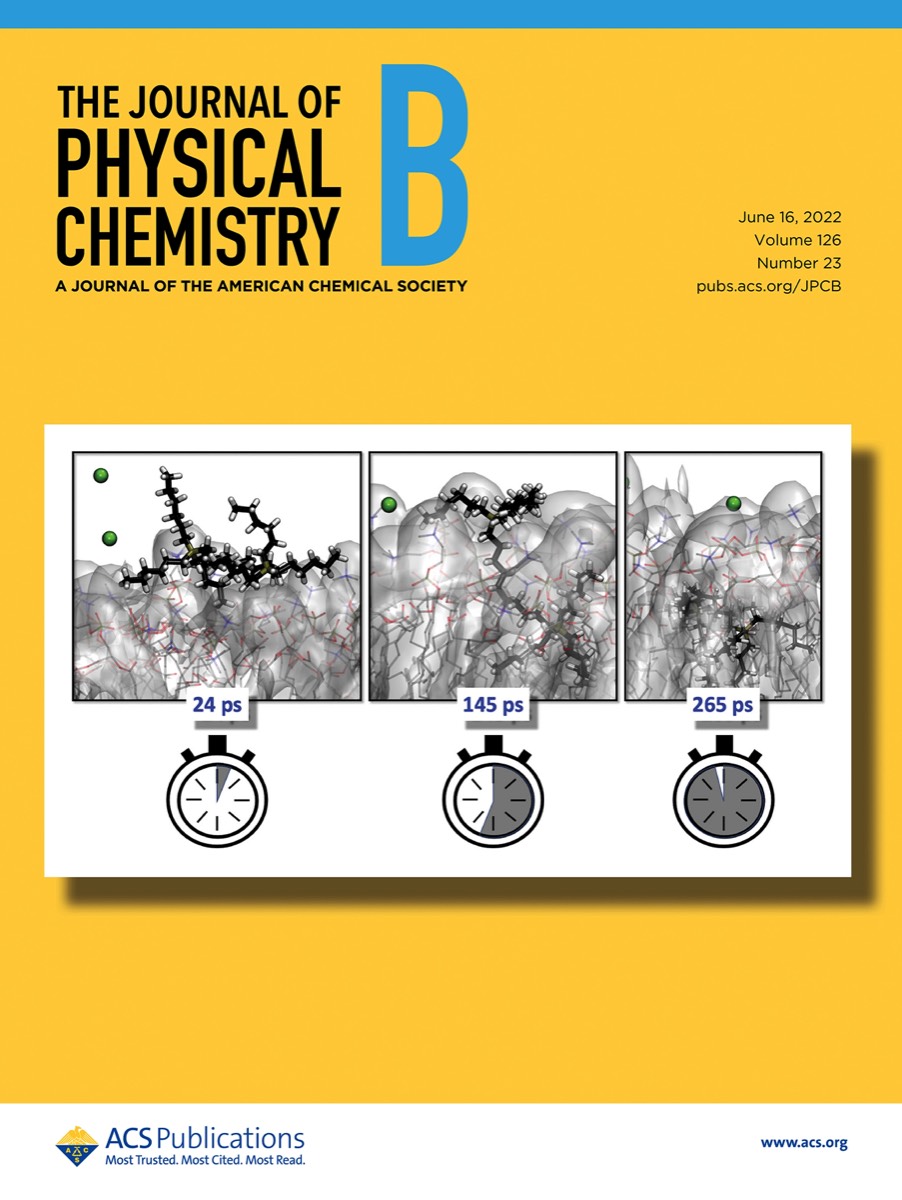
Sequence of snapshots from our MD simulation illustrating the successive stages of one phosphonium ionic liquid di-cation entering the lipid layer. In our work we show that phosphonium cations and dications dissolved in water are readily absorbed in lipid bilayers, changing their structure and dynamics, and triggering a phase change from planar to ripple, potentially able to affect processes relevant in cell biology.
V. Pillai, P. Kumari, A. Benedetto, D. Gobbo, P. Ballone, Absorption of Phosphonium Cations and Dications into a Hydrated POPC Phospholipid Bilayer: A Computational Study, Journal of Physical Chemistry B, 126, 4272 (2022)
>>>> LINK TO THE PAPER <<<<
V. Pillai, P. Kumari, A. Benedetto, D. Gobbo, P. Ballone, Absorption of Phosphonium Cations and Dications into a Hydrated POPC Phospholipid Bilayer: A Computational Study, Journal of Physical Chemistry B, 126, 4272 (2022)
>>>> LINK TO THE PAPER <<<<
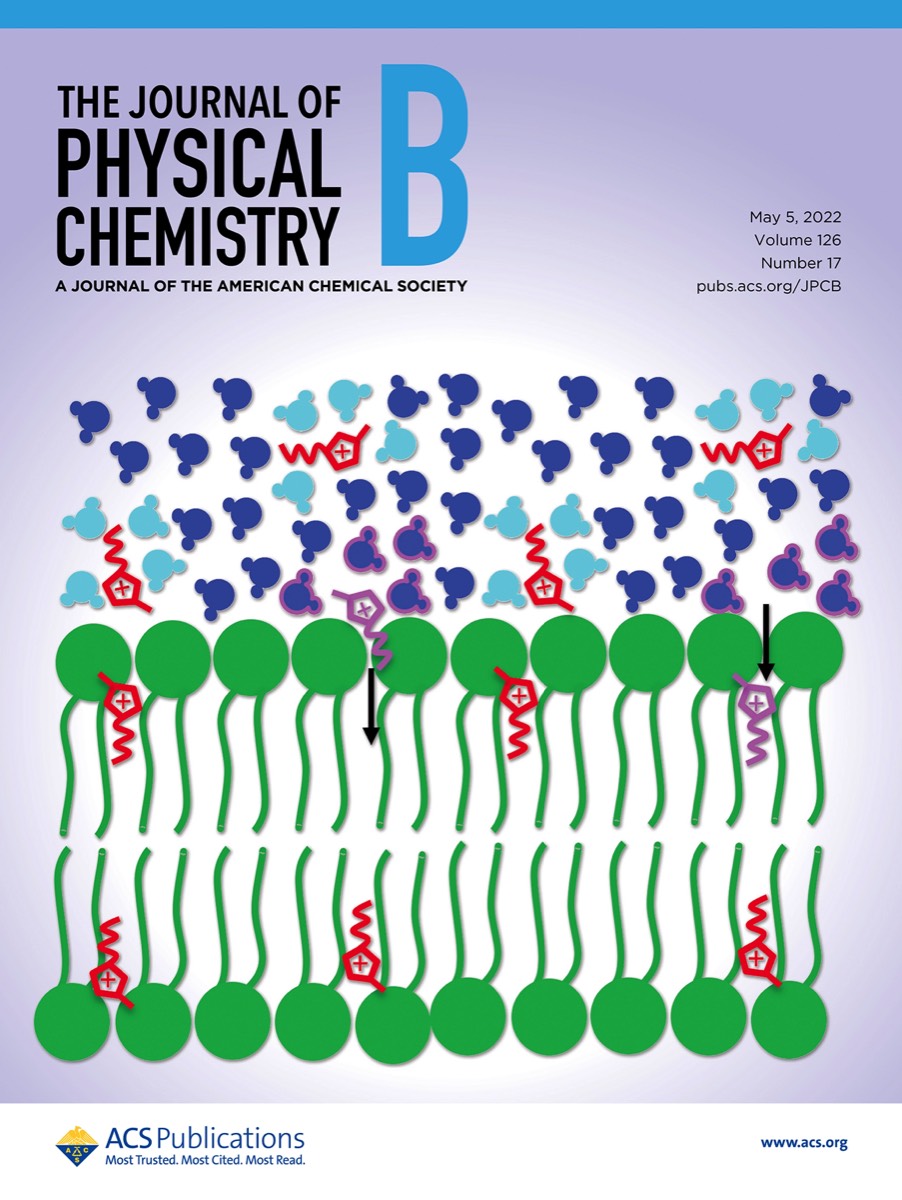
Sketch of a lipid bilayer in contact with a water solution of ionic liquids. Lipid bilayers are a key component of cell membranes. In this work we are quantifying the absorption of a model ionic liquid into DMPC lipid bilayers across their gel, ripple, and fluid phases and proposing an explicative hypothesis based on the entropy gain coming from the ionic liquid hydration water.
A. Benedetto and E. Kelley, Absorption of the [bmim][Cl] Ionic Liquid in DMPC Lipid Bilayers Across Their Gel, Ripple, and Fluid Phases, Journal of Physical Chemistry B, 126, 3309 (2022)
>>>> LINK TO THE PAPER <<<<
A. Benedetto and E. Kelley, Absorption of the [bmim][Cl] Ionic Liquid in DMPC Lipid Bilayers Across Their Gel, Ripple, and Fluid Phases, Journal of Physical Chemistry B, 126, 3309 (2022)
>>>> LINK TO THE PAPER <<<<
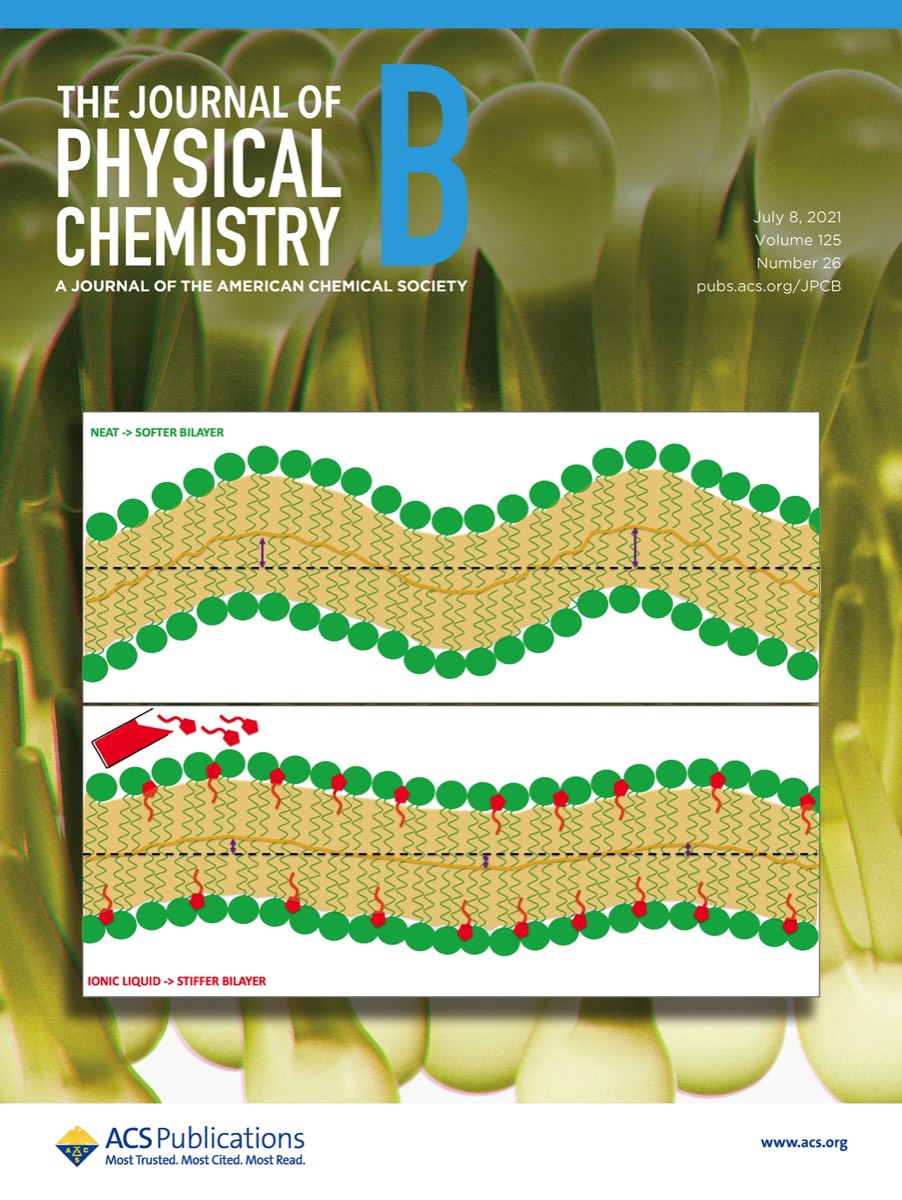
Sketch of thermal equilibrium undulations of a lipid bilayer without and with the presence of ionic liquids in its lipid phase. The elasticity of the cellular lipid membrane plays a crucial role for life, and its control holds the promise for new bio-nanotechnologies. In this work we are showing that an ionic liquid, dispersed at a low concentration at the membrane‒water interface, causes an increase of the membrane bending modulus.
P. Kumari, A. Faraone, E. Kelley, A. Benedetto, Stiffening Effect of the [Bmim][Cl] Ionic Liquid on the Bending Dynamics of DMPC Lipid Vesicles, Journal of Physical Chemistry B, 125, 7241 (2021)
>>>> LINK TO THE PAPER <<<<
P. Kumari, A. Faraone, E. Kelley, A. Benedetto, Stiffening Effect of the [Bmim][Cl] Ionic Liquid on the Bending Dynamics of DMPC Lipid Vesicles, Journal of Physical Chemistry B, 125, 7241 (2021)
>>>> LINK TO THE PAPER <<<<

Power generation by electrochemical devices could ease the transition to a carbon-lean economy. Transport by Grotthus-type mechanisms could boost proton conductivity of protic organic ionic liquids beyond the limit set by the low diffusion constant of their ions. In our work, molecular dynamics simulations reveal paths for proton jumps in half-neutralized diamine-triflate ionic liquids, as the one sketched in the cover.
J. Mora Cardozo, J. Embs, A. Benedetto, P. Ballone, Equilibrium Structure, Hydrogen Bonding, and Proton Conductivity in Half-Neutralized Diamine Ionic Liquids, Journal of Physical Chemistry B, 123, 5608 (2019)
>>>> LINK TO THE PAPER <<<<
J. Mora Cardozo, J. Embs, A. Benedetto, P. Ballone, Equilibrium Structure, Hydrogen Bonding, and Proton Conductivity in Half-Neutralized Diamine Ionic Liquids, Journal of Physical Chemistry B, 123, 5608 (2019)
>>>> LINK TO THE PAPER <<<<
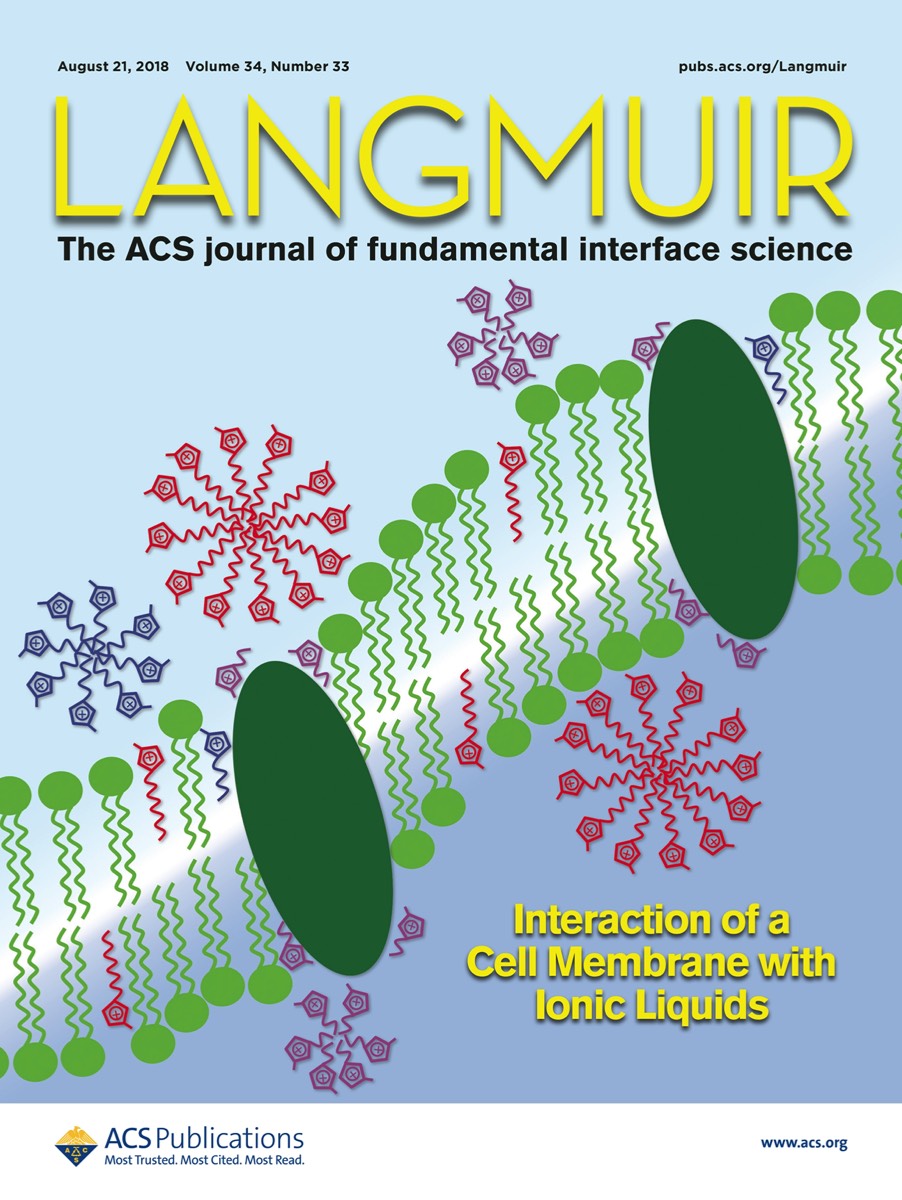
Sketch of a portion of cell membrane hydrated by a water solution of three different ionic liquids. One of these ionic liquids is not able to cross the membrane but settles at the junction between membrane proteins and lipids (in blu), one (in pink) strongly interacts with the membrane proteins and cross the membrane, and one is able to strongly interact and de-stabilises the lipid phase being also able to cross the membrane (in red).
A. Benedetto and P. Ballone, Room-Temperature Ionic Liquids and Bio-Membranes: Setting the Stage for Applications in Pharmacology, Bio-Medicine and Bio-Nano-Technology, Langmuir, 34, 9579, (2018)
>>>> LINK TO THE PAPER <<<<
A. Benedetto and P. Ballone, Room-Temperature Ionic Liquids and Bio-Membranes: Setting the Stage for Applications in Pharmacology, Bio-Medicine and Bio-Nano-Technology, Langmuir, 34, 9579, (2018)
>>>> LINK TO THE PAPER <<<<
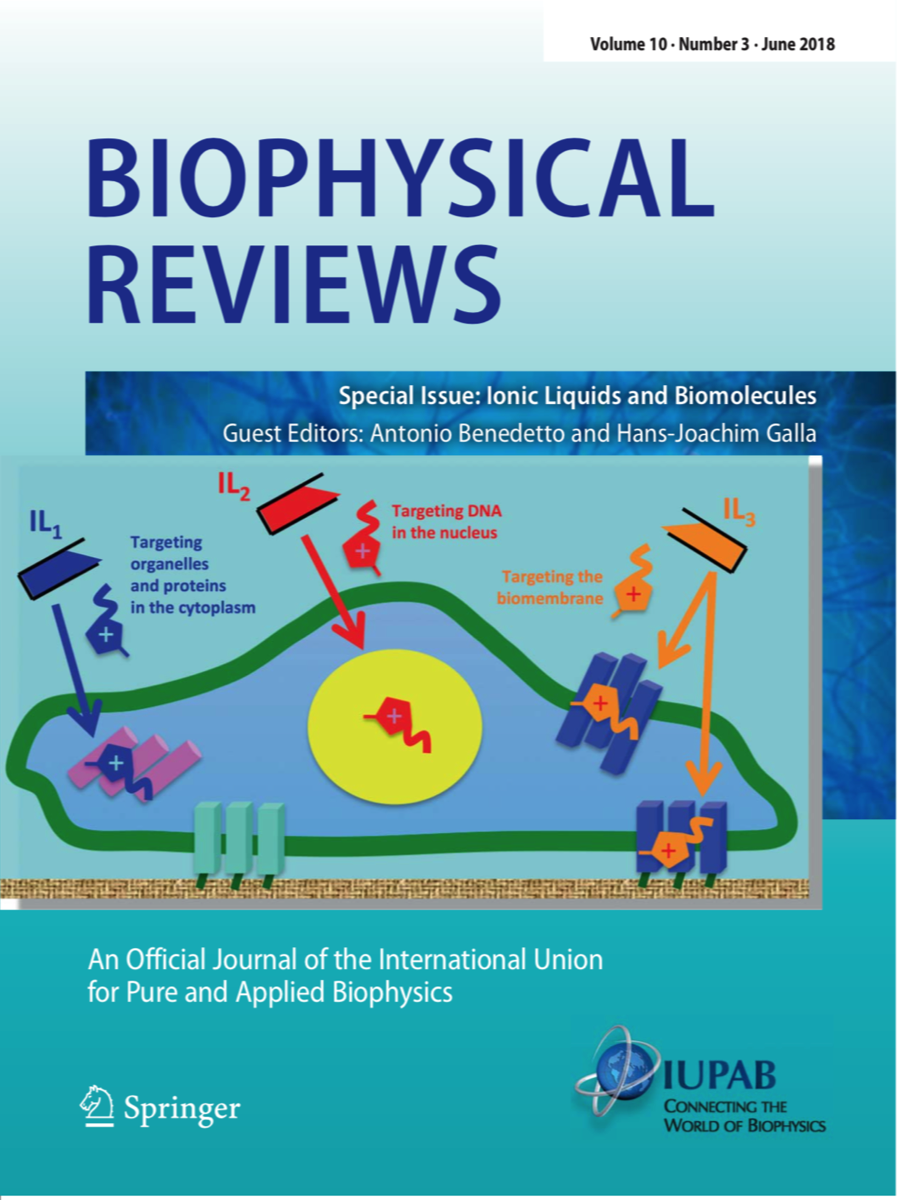
Sketch of a cell "under attach" by three different ionic liquids able to interact, respectively, within its membrane (orange), cytoplasm (blue) and nucleus (red). The aim of our special issue on “Ionic liquids and biomolecules” is to present an up-to-date and comprehensive overview of this emerging and intriguing subject of research which holds the promise of breakthrough applications in several areas such as biomedicine, pharmacology, diagnostics and therapeutics, material science, food science, and, more in general, bionanotechnology.
A. Benedetto and H.-J. Galla, Editorial of the “Ionic Liquids and Biomolecules” special issue, Biophysical Review, 10, 687, (2018)
>>>> LINK TO THE PAPER <<<<
A. Benedetto and H.-J. Galla, Editorial of the “Ionic Liquids and Biomolecules” special issue, Biophysical Review, 10, 687, (2018)
>>>> LINK TO THE PAPER <<<<

Sketch of a representative ionic liquid able to interact with key biomolecules such as proteins, nucleic acids, lipids, and disaccharides. In our review article, we provide an overview of past and current investigations of the chemical physics properties of systems made of ionic liquids and biomolecules, focusing on the most microscopic scales of their structure and dynamics. The primary goal is to identify basic principles in the vast variety of phenomena displayed by these systems.
A. Benedetto and P. Ballone, Room Temperature Ionic Liquids Meet Bio-Molecules: a Microscopic View of Structure and Dynamics, ACS Sustainable Chemistry & Engineering, 4, 392, (2016)
>>>> LINK TO THE PAPER <<<<
A. Benedetto and P. Ballone, Room Temperature Ionic Liquids Meet Bio-Molecules: a Microscopic View of Structure and Dynamics, ACS Sustainable Chemistry & Engineering, 4, 392, (2016)
>>>> LINK TO THE PAPER <<<<